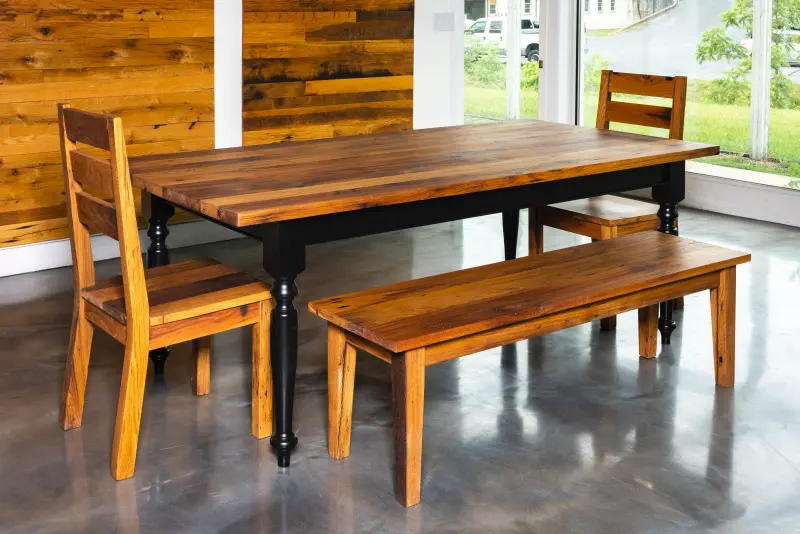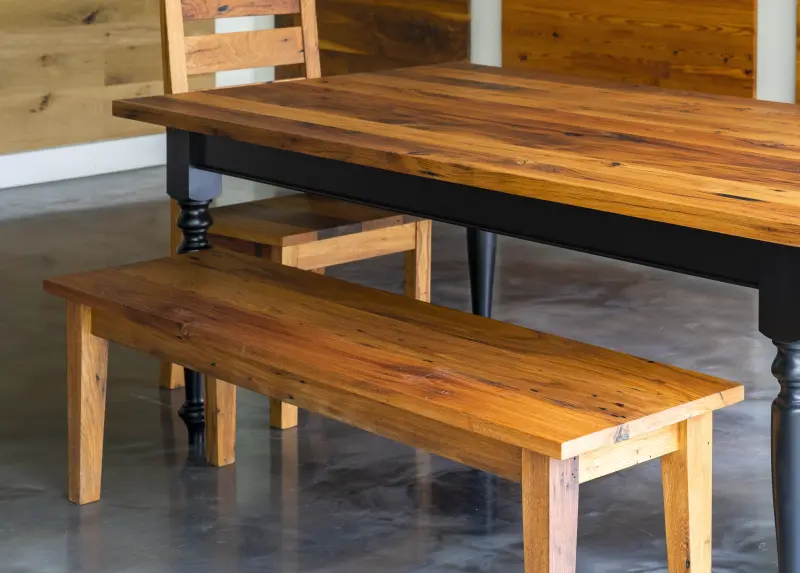Special Care Instructions for Reclaimed Wood Furniture
Reclaimed wood furniture adds a unique and rustic charm to any space. Its rich history and character make it a popular choice for homeowners who value sustainability and aesthetics. However, caring for reclaimed wood furniture requires special attention to preserve its beauty and longevity. Here are some essential care instructions to keep your reclaimed wood furniture in pristine condition.
Regular Care for Reclaimed Wood Furniture
Caring for reclaimed wood furniture involves consistent cleaning to maintain its charm and durability. Regularly dust the surfaces with a soft, dry cloth to remove dirt and debris. For a deeper clean, gently wipe the wood using a damp cloth and a mild soap solution, ensuring you do not harm the finish. Avoid using harsh chemicals or abrasive cleaners, as they can damage the surface and compromise the wood’s character. After cleaning, always dry the furniture thoroughly to prevent moisture-related issues.
Protecting the Surface
Reclaimed wood furniture is sensitive to temperature and humidity changes, making surface protection crucial. Use coasters, placemats, and trivets to guard against heat marks and scratches caused by hot dishes or rough objects. Additionally, placing felt pads under decorative items can help prevent scratches and keep the surface looking its best.
Using Furniture Wax
Enhance and protect your reclaimed wood furniture by applying a layer of furniture wax. Choose a high-quality wax designed for wood furniture for optimal results. Apply the wax in a thin, even layer using a soft cloth, following the direction of the wood grain. Allow the wax to dry completely, then buff it gently with a clean cloth to create a subtle sheen. Regular waxing not only protects the wood from wear and tear but also highlights its natural beauty.
Humidity Control
Wood naturally expands and contracts in response to changes in humidity, which can impact its stability over time. To minimize this effect, it’s important to maintain indoor humidity levels between 40-60%. Using a humidifier during dry seasons or a dehumidifier during humid periods can help create the optimal environment for your reclaimed wood furniture, ensuring its longevity and performance. Additionally, avoid placing the furniture near heat sources or in direct sunlight, as these extreme conditions can lead to warping, cracking, or fading over time.
Seasonal Care For Reclaimed Wood Furniture
During seasonal changes, particularly in climates with significant humidity shifts, monitor your furniture for any signs of stress, such as cracking or swelling. Adjusting the position of your furniture or using additional climate control measures can help mitigate these effects.

Refinishing
Over time, your reclaimed wood furniture may show signs of wear. Refinishing the wood can restore its original beauty. Lightly sand the surface to remove any scratches or imperfections. Then, apply a wood conditioner or oil to enhance the wood’s natural grain and provide a protective layer. Always test any product on a small, inconspicuous area first to ensure it doesn’t adversely affect the wood.
Choosing the Right Finish
Different finishes offer varying levels of protection and aesthetic appeal. Options include oils, varnishes, and polyurethane. Oils penetrate the wood and enhance its natural color, while varnishes and polyurethane provide a more robust protective layer on the surface. Select the finish that best suits your needs and preferences.
Seasonal Maintenance
Regularly inspecting your reclaimed wood furniture is essential to ensure it stays in excellent condition over time. During seasonal maintenance, take the opportunity to tighten any loose screws or joints for added stability. Additionally, reapplying protective finishes can help preserve the wood’s charm and durability. As you inspect, be sure to check for any signs of woodworm or pest damage, addressing issues promptly to prevent further deterioration. With consistent care and attention, your furniture will remain sturdy, functional, and beautiful for many years to come.
Conclusion
Caring for reclaimed wood furniture involves regular cleaning, surface protection, humidity control, and occasional refinishing. By following these special care instructions, you can preserve the unique character and durability of your reclaimed wood furniture. With proper maintenance, your furniture will continue to be a cherished part of your home.
For more ideas and information, check out our Houzz profile. To stay up to date, connect with us on Facebook.


